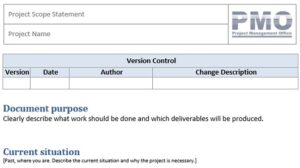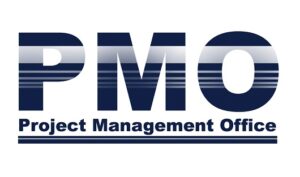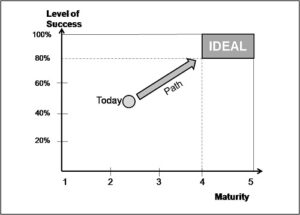No two projects are alike. They differ in purpose, scale, complexity, stakeholders, and delivery environment. Tailoring in PMBOK 8 unlocks the ability for project managers to adapt the principles and performance domains to the unique contours of their project environment.
In earlier editions, tailoring was mentioned as a step — something you did once when choosing processes. In PMBOK 8, it becomes a core discipline across all performance domains, ensuring that each project’s governance, planning, and delivery approach is adapted to its unique context.
In this article, we’ll explore how Tailoring in PMBOK 8 empowers organizations and project leaders to mold these domains to fit the specific needs and challenges of your project, ensuring a custom fit every time. By embracing this adaptability, you pave the way for more effective and successful project outcomes delivering consistent value without sacrificing agility or innovation.
What Is Tailoring in PMBOK 8?
Tailoring in PMBOK 8 is the deliberate process of adapting principles, performance domains, methods, and practices to fit the specific context of a project or program.
It ensures that project management remains effective and proportionate, avoiding the extremes of over-control or under-governance.
Tailoring applies to every performance domain — Governance, Scope, Schedule, Finance, Stakeholder, Resources, and Risk — and ensures they work together cohesively to support the project’s intended outcomes.
In essence, tailoring is how organizations operationalize value delivery in diverse environments.
The Shift from Standardization to Adaptability
Previous PMBOK editions emphasized standardization — using uniform processes to achieve consistency. While effective for mature organizations, this approach often limited responsiveness.
PMBOK 8 redefines success around adaptability, where consistency of outcomes is achieved through context-specific practices, not rigid templates.
Key Shifts about tailoring in PMBOK 8:
- From “One Size Fits All” to “Fit for Purpose”
Tailoring ensures that every method used contributes to value — nothing more, nothing less. - From Reactive to Proactive Tailoring
Tailoring is planned at initiation, applied during execution, and reviewed throughout the life cycle. - From Process Customization to Domain Adaptation
Instead of modifying individual processes, PMBOK 8 encourages adjusting entire domains to reflect context, maturity, and risk appetite.
This evolution makes tailoring the strategic bridge between governance standards and practical execution.
Why Tailoring Matters in Value-Based Project Management
Tailoring is not about flexibility for its own sake — it’s about optimizing value delivery.
By adjusting practices to context, organizations ensure that every project is both efficient and effective in achieving its purpose.
Benefits of Tailoring Include:
- Improved Alignment: Projects fit organizational strategy and stakeholder expectations.
- Increased Agility: Teams respond faster to change.
- Optimized Resource Use: Effort is focused on activities that generate measurable value.
- Reduced Complexity: Unnecessary bureaucracy and documentation are eliminated.
- Enhanced Learning: Each tailored approach creates feedback for future initiatives.
In PMBOK 8, tailoring is thus a learning mechanism that continuously improves the project management system.
How to Apply Tailoring in PMBOK 8
The PMBOK® Guide – Eighth Edition outlines a logical flow for tailoring decisions that can be applied to any performance domain or project type.
1. Understand the Organizational Context
Assess strategic goals, governance structures, culture, and maturity. Tailoring must reflect both corporate standards and the project’s unique constraints.
2. Analyze Project Characteristics
Evaluate size, complexity, duration, and stakeholder influence. Consider the delivery approach — predictive, adaptive, or hybrid.
3. Identify Applicable Performance Domains
All projects require the seven performance domains, but their emphasis and depth vary. For example, Governance may be light in a small internal project but critical in a multi-stakeholder initiative.
4. Select and Adapt Methods and Tools
Decide which methods, frameworks, and artifacts best support the chosen approach (e.g., agile boards, earned value, or risk heatmaps).
5. Document Tailoring Decisions
Transparency supports governance and learning. Documenting why specific practices were chosen helps other teams replicate success.
6. Monitor and Adjust
Tailoring is iterative. Regularly assess whether chosen methods still serve the project’s purpose as conditions evolve.
This structured approach aligns tailoring with continuous improvement and adaptive performance.
Tailoring Across Performance Domains
PMBOK 8 emphasizes that tailoring must occur across all domains, not in isolation. Below are examples of how this principle applies in practice:
| Performance Domain | Tailoring Focus |
|---|---|
| Governance | Define appropriate oversight and decision authority. Adjust reporting cadence and metrics based on project criticality. |
| Scope | Balance formal scope statements with adaptive backlog refinement. |
| Schedule | Choose between fixed timelines or rolling-wave planning. |
| Finance | Adapt financial control rigor to risk and funding model. |
| Stakeholder | Match engagement intensity to stakeholder influence and interest. |
| Resources | Tailor team structures for co-located or virtual collaboration. |
| Risk | Scale the depth of analysis and monitoring to project uncertainty. |
This integrated tailoring ensures systemic coherence, where each domain complements the others rather than operating independently.
Tailoring and Organizational Governance
One of the key insights of PMBOK 8 is that tailoring must align with governance.
While teams adapt delivery practices, governance defines the boundaries of authority, compliance, and accountability.
PMOs play a central role here — not to enforce uniformity, but to ensure that tailored approaches remain aligned with organizational objectives and performance standards.
Best Practices for Tailored Governance:
- Use governance frameworks that allow flexibility (e.g., stage gates adapted to agile reviews).
- Establish decision thresholds (when to escalate, approve, or adapt).
- Implement feedback loops between teams and executives to learn from outcomes.
When governance supports tailored execution, organizations achieve both discipline and agility.
Tailoring in Predictive, Agile, and Hybrid Contexts
Tailoring looks different depending on the chosen delivery approach. PMBOK 8 explicitly encourages hybridization to achieve balance.
| Approach | Tailoring Characteristics |
|---|---|
| Predictive | Adjust process rigor based on size, risk, and regulation. |
| Agile / Adaptive | Adapt cadence, ceremonies, and backlog management to team dynamics. |
| Hybrid | Combine predictive planning with agile delivery at work package or component levels. Tailoring for hybrid projects involves strategically selecting practices from both worlds to create a balanced framework that leverages the strengths of each. This approach maximizes adaptability while maintaining some level of structure and predictability. |
This flexibility helps organizations transition smoothly between methods without abandoning consistency or control.
Measuring Tailoring Effectiveness
Since PMBOK 8 treats tailoring as a performance domain enabler, its effectiveness must also be measurable.
Tailoring Performance Indicators (TPIs):
- Adaptation Efficiency: Time and effort required to implement tailored approaches.
- Outcome Alignment Score: Degree of alignment between project results and intended value.
- Stakeholder Satisfaction Index: Measures perceived appropriateness of delivery approach.
- Learning Feedback Rate: Frequency of tailoring insights incorporated into future projects.
These metrics demonstrate how tailoring contributes to organizational learning and maturity.
Challenges and Good Practices of Tailoring in PMBOK 8
Even when teams embrace tailoring, challenges often arise:
- Over-Tailoring: Excessive customization creates inconsistency and confusion.
- Under-Tailoring: Blind adherence to templates limits flexibility.
- Documentation Gaps: Missing rationale weakens governance.
- Resistance to Change: Teams accustomed to prescriptive models struggle with adaptive thinking.
How to Overcome Them:
- Provide training on adaptive leadership and decision-making.
- Use lightweight documentation templates to capture tailoring logic.
- Promote cross-project learning sessions to share what works.
- Establish a PMO knowledge base of tailoring examples.
These practices ensure that tailoring enhances performance without compromising control.
FAQs on Tailoring in PMBOK 8
As you delve into the world of tailoring in PMBOK 8, you might have some questions. Here are the answers to common inquiries to help you navigate this essential aspect of project management.
What is tailoring in PMBOK 8?
Tailoring in PMBOK 8 involves customizing project management processes and performance domains to suit the specific needs and context of your project environment.
Why is tailoring important?
Tailoring allows project managers to align their approaches with organizational goals, project characteristics, and stakeholder needs, enhancing overall project success.
How do I know what to tailor?
Start by understanding your organizational context and project characteristics. Identify performance domains that need adaptation to better fit your project’s unique demands.
Can tailoring lead to inconsistency?
While customization can introduce variability, documenting your tailoring decisions helps maintain consistency and coherence across the project.
Is tailoring applicable to all project types?
Yes, tailoring is applicable to predictive, agile, and hybrid projects, allowing flexibility across different project management approaches.
By addressing these common questions, you can confidently apply tailoring in your projects, fostering greater adaptability and success.
Conclusion: Embracing Tailoring for Success
The Tailoring in PMBOK 8 reflects a mature understanding of project diversity and complexity.
It replaces rigidity with strategic flexibility, empowering project teams to deliver value in any context — from regulated environments to agile innovation labs.
By embedding tailoring across all performance domains, PMBOK 8 ensures that governance, scope, schedule, finance, and risk are all adapted to context while remaining connected through a unified value delivery system.
In today’s dynamic environment, tailoring is not optional — it’s essential. It is the discipline that transforms standards into fit-for-purpose solutions and makes PMBOK 8 the most adaptable framework in the history of modern project management.
Now, it’s your turn to embrace this dynamic approach. Start applying tailoring in your projects today and witness the positive impact it can have on your success. Remember, every project is unique, and with tailoring, you have the tools to adapt and thrive!
Call to Action:
References
Project Management Institute (PMI). A Guide to the Project Management Body of Knowledge (PMBOK® Guide) – Eighth Edition. Newtown Square, Pennsylvania, USA: Project Management Institute, 2025. PMBOK Guide 8: The New Era of Value-Based Project Management. Available at: https://projectmanagement.com.br/pmbok-guide-8/
Disclaimer
This article is an independent educational interpretation of the PMBOK® Guide – Eighth Edition, developed for informational purposes by ProjectManagement.com.br. It does not reproduce or redistribute proprietary PMI content. All trademarks, including PMI, PMBOK, and Project Management Institute, are the property of the Project Management Institute, Inc. For access to the complete and official content, purchase the guide from Amazon or download it for free at https://www.pmi.org/standards/pmbok if you are a PMI member.





